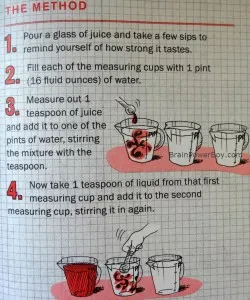The Book of Perfectly Perilous Math: 24 Death-Defying Challenges for Young Mathematicians by Sean Connolly, Workman Publishing, 2012
Math . . . some boys hate it while others can’t get enough of it. This book might be a good choice for everyone.
If your boy is into math The Book of Perfectly Perilous Math is a fun book to challenge him and make him think—if you don’t mind a little drama and the possibility of death! If your boy hates math, well, he might enjoy the problems here. But as my son reminded me, “Hey, that’s just a Math book!” No matter how much the author tries to make the problems fun, they are still math problems.
This post may contain affiliate links which means I may receive a small commission, at no cost to you, if you make a purchase through a link. All opinions are my own and I never share something unless I think it is great for boys. Thanks for your support!
Note: if you have a sensitive child or are opposed to the occasional sentence like “It won’t be much longer before the blade slices right through you” you should likely pass this one up.
The Book of Perfectly Perilous Math is for kids in 5th, 6th, and 7th grade. The book is broken down into the 3 levels by your chance of survival. 5th grade—you might make it; 6th grade—slim to none; 7th grade—you’re dead. The survival strategies are the math tools you will need to use to solve the problems. The math labs are very well done and include some hands-on activities.
There are 24 problems in this hardcover book. 5th grade has only 4 challenges. If your boy is young I would get this book as he will be able to grow with it. 6th grade has the most challenges at 14 and 7th grade has 6. If your boy is in 7th grade and is great at math you might not want to pay for the hardcover as he won’t have many problems to do and the majority of the problems may be too easy.
The illustrations are fun and add a lot to the character of the book. The problems do not require a lot of reading but they are in the form of a story problem—or should I say a perilous story problem. Overall this is a good attempt at presenting math in a fun way.
Logical-Mathematical learners will have a lot of fun with this one as will some Kinesthetic Learners because of the hand-on learning.



